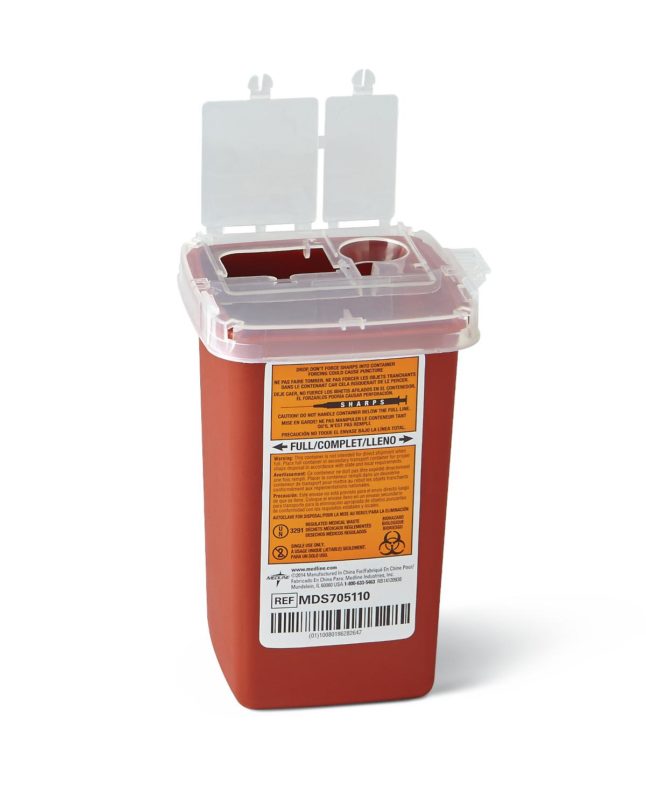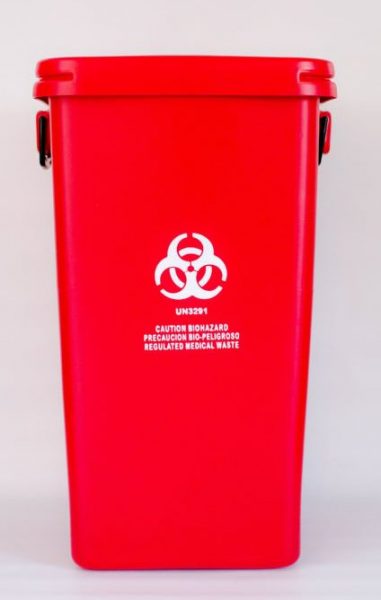Effective and Eco-friendly Medical Garbage Disposal Solutions
In the ever-evolving field of healthcare, the problem of clinical waste disposal stays a subject of vital significance. As healthcare facilities, facilities, and various other health care centers make every effort to give quality patient care, they have to additionally address the obstacle of successfully and sensibly disposing of their waste.
Waste Partition Practices
Efficient waste partition techniques are vital to make sure the appropriate and risk-free disposal of clinical waste. Clinical waste, that includes products infected with potentially infectious substances, should be handled in a manner that decreases the threat of harm to both public health and wellness and the environment. Appropriate waste partition plays a crucial role in accomplishing this objective.
Waste segregation entails the separation of various sorts of waste based on their attributes and prospective threats. This process ensures that each sort of waste is treated and thrown away suitably (medical waste disposal services with WasteX). It starts at the factor of generation, where health care facilities should have marked bins and containers for various waste classifications, such as sharps, infectious waste, pharmaceutical waste, and non-hazardous waste
By segregating clinical waste at the resource, doctor can prevent cross-contamination and minimize the risk of exposure to contagious agents. This method likewise promotes the recycling and healing of specific products. As an example, setting apart and recycling tidy plastics and glass reduces the demand for raw materials and minimizes the ecological effect of medical garbage disposal.

Autoclaving and Sanitation Strategies
In order to guarantee the safe and correct disposal of clinical waste following reliable waste partition methods, healthcare facilities need to use autoclaving and sanitation techniques. Autoclaving is a commonly utilized method that makes use of high-pressure steam to decontaminate clinical waste.
An additional frequently used sanitation strategy is chemical sterilization. This entails dealing with the waste with chemicals such as ethylene oxide or hydrogen peroxide, which eliminate microorganisms by disrupting their mobile framework. Chemical sanitation is frequently utilized for heat-sensitive products or products that can not stand up to the high temperature levels of autoclaving. Nevertheless, it is necessary to note that chemical sanitation calls for appropriate handling and disposal of the chemicals used, as they can be dangerous to human health and the environment if not handled correctly.
On-Site Waste Therapy Equipments
Medical care facilities have actually carried out on-site waste therapy systems to resolve the disposal of clinical waste in a risk-free and effective way. These systems supply a convenient and cost-efficient remedy for handling medical waste generated within the center. On-site waste therapy systems utilize various technologies to treat and get rid of of clinical waste on-site, minimizing the need for transportation to off-site facilities.
One frequently utilized on-site waste therapy system is the microwave innovation. This technology uses microwave energy to sanitize and sterilize clinical waste, minimizing its volume and making it secure for disposal. An additional system is the chemical disinfection modern technology, which entails treating clinical waste with chemicals to kill microorganisms and lower its dangerous nature. This method is specifically effective for fluid clinical waste.
They get rid of the danger of medical waste being messed up during transport, reducing the capacity for contamination and exposure to hazardous materials. On-site treatment systems reduce the general ecological influence of medical waste by minimizing transportation and the requirement for landfill space.
Recycling and Repurposing Campaigns
As healthcare centers make every effort this content for sustainable waste management techniques, they are increasingly discovering recycling and repurposing campaigns as a method of minimizing the ecological effect of medical waste. Recycling and repurposing efforts include locating innovative ways to reuse or change medical waste into brand-new products or materials. click for info This not only aids to lessen the quantity of waste that finishes up in burners or garbage dumps but additionally decreases the consumption of resources and energy needed for making brand-new products.
One example of reusing in the healthcare market is the reprocessing of single-use clinical tools. This not only minimizes the quantity of waste produced however also conserves medical care facilities substantial costs associated with purchasing brand-new gadgets.
Another reusing effort involves the recycling of plastic containers, such as medicine bottles or syringe coverings. These containers can be gathered, arranged, and sent out to recycling facilities where they are refined, thawed down, and changed into new plastic items. This aids to conserve sources and reduce the demand for virgin plastic manufacturing.
Along with reusing, repurposing initiatives include discovering different uses for medical waste. For example, shredded paper waste from clinical documents or Get More Information product packaging products can be repurposed as bedding material for animals or as insulation material (medical waste removal near me). Likewise, natural waste such as food scraps from medical care centers can be composted and made use of as plant food in yards or farming areas.

Renewable Power Solutions
One reliable approach to reducing the environmental impact of healthcare operations entails implementing renewable resource remedies. Medical care centers, such as centers and healthcare facilities, take in significant amounts of power for different functions, including lights, home heating, air conditioning, and operating medical tools. By transitioning to renewable resource sources, these facilities can significantly lower their carbon impact and contribute to a more lasting future.

Carrying out eco-friendly energy services in medical care centers not only decreases greenhouse gas discharges yet also offers long-lasting expense financial savings. While the first investment in renewable resource facilities might be greater, the lasting functional costs of renewable energy systems are substantially reduced contrasted to typical fossil fuel-based power resources. Additionally, renewable resource systems are trustworthy and can give a secure and uninterrupted power supply, guaranteeing constant health care services even during power outages or emergencies.
Conclusion
In verdict, implementing reliable and environmentally pleasant medical waste disposal solutions is crucial for preserving a lasting health care system. By taking on waste segregation techniques, autoclaving and sterilization strategies, on-site waste treatment systems, reusing and repurposing campaigns, and sustainable power services, medical care facilities can substantially reduce their environmental influence.
It starts at the point of generation, where medical care facilities must have marked bins and containers for various waste groups, such as sharps, infectious waste, pharmaceutical waste, and non-hazardous waste.
In order to make sure the correct and secure disposal of medical waste complying with reliable waste partition practices, health care centers have to employ autoclaving and sterilization methods.Medical care facilities have executed on-site waste therapy systems to resolve the disposal of clinical waste in a effective and risk-free fashion. On-site waste therapy systems make use of various innovations to get rid of and deal with of clinical waste on-site, decreasing the need for transportation to off-site facilities.
As healthcare facilities strive for sustainable waste management methods, they are progressively checking out recycling and repurposing efforts as a way of minimizing the ecological effect of clinical waste. - medical waste removal